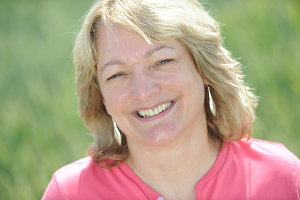- About
-
Research
- Agronomy and farming systems
-
Agricultural crop research
-
Research projects - agriculture
- About SASSA-SAI
- BioBoost
- Biomass Connect
- CTP for Sustainable Agricultural Innovation
- Climate Ready Beans - workshop presentations (March 2022)
- Crop diversity HPC cluster
- Designing Future Wheat
- Final project workshop
- Get involved
- List of materials
- News and updates
- Partners
- Rustwatch
- The Sentinel Crop Disease Surveillance Network
- The research team
- UK Cereal Pathogen Virulence Survey
- UK wheat varieties pedigree
- Weed management - IWM Praise
- Crop breeding
- Crop characterisation
- Data sciences
- Genetics and pre-breeding
- Plant biotechnology
- Plant pathology and entomology
- Resources
-
Research projects - agriculture
-
Horticultural crop research
-
Research projects - horticulture
- Augmented Berry Vision
- BEESPOKE
- Boosting brassica nutrition in smart growing systems
- CTP for Fruit Crop Research
- Develop user-friendly nutrient demand models
- Egg laying deterrents for spotted wing drosophila
- Enhancing the nutritional quality of tomatoes
- Improving berry harvest forecasts and productivity
- Improving vineyard soil health through groundcover management
- Intelligent growing systems
- Knowledge transfer for sustainable water use
- POME: Precision Orchard Management for Environment
- RASCAL
- STOP-SPOT
- UV-Robot
- Crop science and production systems
- Genetics, genomics and breeding
- Pest and pathogen ecology
- Field vegetables and salad crops
- Plum Demonstration Centre
- The WET Centre
- Viticulture and Oenology
-
Research projects - horticulture
- Crop Science Centre
- Research Projects
-
Services
- Analytical Services
- Business Development
- Commercial trial services
- Membership
- Plant breeding
- Plant characterisation
- Seed certification
-
Training
-
Technical agronomy training
- Advanced crop management of bulb onions
- Advanced crop management of vegetable brassicas
- Advanced nutrient management for combinable crops
- Benefits of cover crops in arable systems
- Best practice agronomy for cereals and oilseed rape
- Developing a Successful Strategy for Spring Crops
- Disease Management and Control in Cereal Crops
- Incorporating SFI options into your rotation
- Protected Environment Horticulture – Best Practice
- Techniques for better pest management in combinable crops
- Crop inspector and seed certification
- Licensed seed sampling
-
Technical agronomy training
- News & Views
- Events
-
Knowledge Hub
- Alternative and break crops
-
Crop genetics
- POSTER: Diversity enriched wheat (2025)
- POSTER: Genetics of wheat flag leaf size (2024)
- POSTER: Wheat yield stability (2024)
- Poster: Traits for future cereal crops (2022)
- POSTER: wild wheat fragment lines (2022)
- POSTER: Improving phenotyping in crop research (2022)
- PRESENTATION: Plant breeding for regen ag
- Poster: Designing Future Wheat (2020)
- Crop nutrition
-
Crop protection
- POSTER: Understanding the hierarchy of black-grass control (2025)
- POSTER: Emerging weed threats (2025)
- POSTER: Disease control in barley (2025)
- Poster: Weed seed predation in regen-ag (2024)
- POSTER: Disease control in winter wheat (2025)
- POSTER: Mode of action (2023)
- POSTER: Inter-row cultivation for black-grass control (2022)
- POSTER: UKCPVS winter wheat yellow rust in spring 2025 (2025)
- Poster: Management of Italian ryegrass (2021)
- POSTER: UKCPVS winter wheat rusts - 2024/25 review (2025)
- POSTER: UKCPVS disease monitoring and the benefit to UK growers (2025)
- POSTER: Diagnosing and scoring crop disease using AI (2025)
- POSTER: Finding new sources of Septoria resistance (2024)
- POSTER: Fungicide resistance research (2024)
- POSTER: Detecting air-borne pathogens (2024)
- POSTER: Oilseed rape diseases (2024)
- POSTER: Fungicide resistance research (2024)
- POSTER: Improving chocolate spot resistance (2022)
- Poster: Pathogen diagnostics (2022)
- Fruit
- Regen-ag & sustainability
-
Seed certification
- POSTER: Wheat DUS (2024)
- POSTER: Innovation in variety testing (2024)
- POSTER: AI and molecular markers for soft fruit (2024)
- POSTER: Barley crop identification (2023)
- POSTER: Herbage grass crop identification (2023)
- POSTER: Herbage legume crop identification (2024)
- POSTER: Minor cereal crop inspecting (2023)
- POSTER: Pulse crop identification (2023)
- POSTER: Wheat crop identification (2023)
-
Soils and farming systems
- POSTER: Checking soil health - across space and time (2024)
- POSTER: Checking soil health - step by step (2024)
- POSTERS: Changing soil management practices (2022)
- Poster: Monitoring natural enemies & pollinators (2021)
- POSTER: Soil structure and organic matter (2024)
- POSTER: Novel wheat genotypes for regen-ag (2024)
- Video: New Farming Systems project (2021)
- Video: Saxmundham Experimental Site (2021)
- POSTER: Impact of prolonged rainfall on soil structure (2024)
- POSTER: Soil & agronomic monitoring study (2024)
- POSTER: The impact of rotations & cultivations (2024)
- VIDEO: Great Soils; soil sampling guidelines (2020)
- Poster: Soil invertebrates within arable rotations (2024)
- VIDEO: Soil health assessment (2021)
- POSTER: Saxmundham - modern P management learnings
- POSTER: Saxmundham - 125 years of phosphorus management
- Poster: Soil phosphorus - availability, uptake and management (2025)
- POSTER: Morley long term experiments (2025)
- POSTER: Exploiting novel wheat genotypes for regen-ag (2025)
- Video: Saxmundham Experimental Site (2021)
- Varieties
NEWS: New 'fields' of research to help farmers improve soil health

Agri-Tech East’s New Soil Health Special Interest Group
Microbial activity is more important in maintaining soil health and its natural fertility than previously thought and a new technique to visualise soil structure will be one of the presentations at the launch of Agri-Tech East’s new Soil Health Special Interest Group at NIAB in Cambridge on the 8th September.
Professor John Crawford, Associate Director of Rothamsted Research and co-chair of the Soil Health SIG, says: “Soil is the most important natural resource a farmer has and we know surprisingly little about what makes it tick. Previous thinking suggested soil structure is random, but our research suggests it is anything but. The question that interests me is ‘if soil structure isn’t random, then what is organising it?’
“One thing we are sure about is that micro-organisms have a vested interest in maintaining a beneficial soil structure,” continues John. “To survive they need the right amount of oxygen, water and nutrients to flow through the soil. Leaving this to chance is far too risky, and there is evidence that microbes have been engineering their physical environments as far back as the earliest fossil record.
“The soil ecosystem appears to be self-organising,” says John. “Microbial activity varies from pore to pore. The hypothesis is that where these micro-environments are beneficial, the microbes thrive and release a substance that glues the soil particles together, protecting these beneficial micro-environments against disruption. The net effect is that over time, the favourable micro-environments predominate over the less favourable ones. Farmers who help microbes thrive will improve structure and increase the soils’ natural fertility.”

The research by John and his team show the scientific basis for the benefits of leaving crop residues in the field after harvesting and using cover crops between August and spring drilling. The organic matter feeds the microbes that otherwise would die over the winter, thus helping to maintain soil structure. These soils are more resistant to erosion, have better drainage and crops planted in spring will have access to nutrients already present in the soil.
Using CT imaging, normally used in hospitals to assess human health and techniques borrowed from computer gaming, researchers can now view soil on the micro-scale. This unique view allows researchers to see and quantify the structure of soil, revealing a network of ‘tunnels’ through the soil.
John explains: “The ‘fly-through’ is a particularly clear way to demonstrate the organisation that exists at the pore scale in soil. If the structure wasn’t organised, we wouldn’t be able to fly through as there would be too many dead ends. Our next goal is to use this technology to look at soils under different land management practises and establish what effects these have had on the capacity of soil to self-organise and how this impacts on long-term sustainability and nutrient content.
“Our end goal is to find better ways of enhancing the productivity, efficiency and resilience of soil. This could be through new regimes of soil nutrition that feed the plant and the soil, changes in tillage practice, or the identification of novel plant traits that improve soil. As our research progresses, hopefully these answers will become clear.”
Robert Salmon, a farmer from NE Salmon Limited, says: “As growers we need to extract the most out of our soil. Meetings like the Soil Health SIG are incredibly important as it links scientific knowledge to decision-makers in the field. Without proper dissemination and interpretation of the results, the value of the research will be lost and the reports will gather dust on a library shelf.”
Also contributing to the event will be John's co-chairs: David Felce of Agrii, and Dr Tony Miller from the metabolic biology department at the John Innes Centre, who will be giving a talk on what is healthy soil and how to make more efficient use of applied fertiliser.
After the presentations there will be a breakout session to discuss the issues raised and to address further questions, such as what methods currently exist that measure and monitor the quality of soil and what incentivise would motivate farmers to invest further in soil health.
The Agri-Tech East Soil Health SIG is to be held at NIAB Park Farm, Villa Road, Histon, CB24 9NZ from 13.30 on 8th September.
For more information: www.agritech-east.co.uk/events/soil-health-sig-launch-event/
The link to view the ‘fly-though’: bitly.com/soil-fly-through
- ENDS -
NOTES TO EDITORS
Contacts for media: Rachel Holdsworth, Sarah Carr: Holdsworth Associates, PR Consultants to Agri-Tech East.
E: sarah.carr [at] holdsworth-associates.co.uk (sarah[dot]carr[at]holdsworth-associates[dot]co[dot]uk); T: 01954 202789.
About Agri-Tech East: www.agritech-east.co.uk
Agri-Tech East is a business-focused cluster organisation for the East of England. It is home to the business, technology and research powerhouses of Cambridge and Norwich as well as some highly innovative growers and producers who manage much of the UK's most productive and profitable agricultural land. By creating a global innovation hub, it aims to improve the international competitiveness of plant and crop-based agriculture and catalyse economic growth.
Contact: Dr Belinda Clarke, Director of Agri-Tech East
E: belinda.clarke [at] agritech-east.co.uk (belinda[dot]clarke[at]agritech-east[dot]co[dot]uk)





